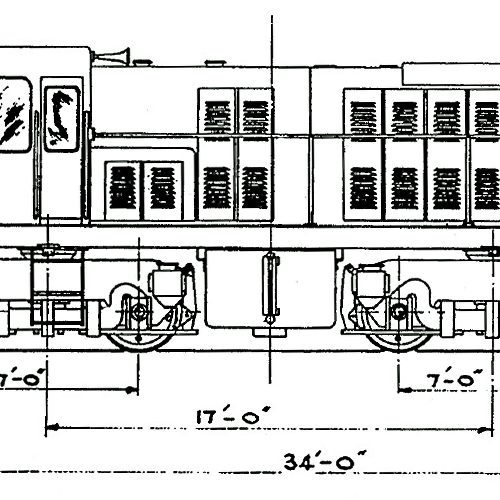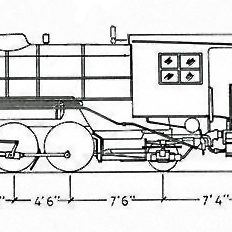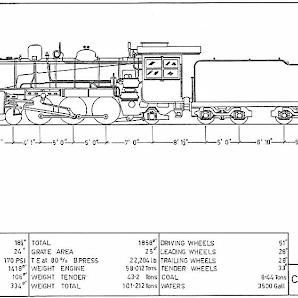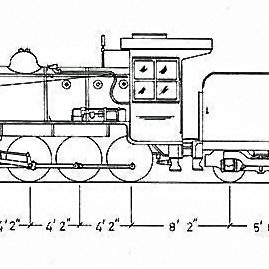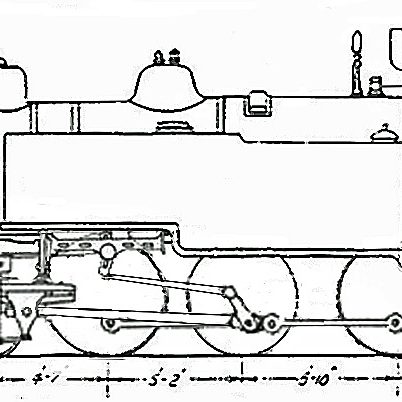Herbert William Garratt (1864-1913), Inspecting Engineer for the New South Wales Government, brought to Beyer, Peacock the basic principle of locomotive articulation, which has since borne his name. The drawing for the patent specification was taken out by Garratt in 1907. However, his overseas commitments and sudden death on 25th September 1913 meant that most of the development of the design was carried out by Beyer, Peacock themselves.
A “Beyer Garratt” consists, virtually, of two ordinary locomotive chassis, placed some distance apart, and held together by a girder frame which supports the boiler and firebox. The weight of boiler and frame is transmitted to the two chassis by means of pivots at either end, and this enables the engine to traverse sharp curves which would not be possible with a conventional locomotive of the same size.
The Garratt design also had a number of other advantages over traditional locomotives. With the boiler suspended between two power units, there was unrestricted space available for wide and deep fireboxes and barrels of large diameter. Another feature was the spreading the weight of the engine over a great many axles. In many countries, as traffic increased, the trains could not be lengthened because conventional engines had reached the limit of their power due to restrictions of axle loading. Alternative solutions were either double-heading longer trains or re-building and re-laying large parts of the lines to take heavier locomotives. Either method was expensive, but the Garratt provided a cheaper answer. One boiler, which needed only one crew, could be placed on two power bogies with the result that the tractive effort could be doubled and the weight distributed over a large number of wheels. Garratt locomotives were particularly effective on narrow gauge railway lines where the restricted loading gauge forbids the use of very large and powerful boilers on ordinary engines.
By the 1920s, the Garratt type had proved its superiority of other forms of articulated locomotives and over time orders were received from Africa, Asia, Australia, Europe, New Zealand, and South America. Beyer, Peacock & Company purchased sole rights of manufacture in Britain. After the patents ran out in 1928, the company began to use the name “Beyer-Garratt” to distinguish the locomotives they had manufactured.
Altogether Beyer, Peacock constructed 1023 Beyer Garratts and granted manufacturing licenses other companies, the most significant being Société Franco Belge de Materiel du Chemins de fer, Raismes, France. In the busy post war years, Beyer, Peacock built 449 Beyer Garratts at their Gordon Works and sub-let or licensed another 235 Beyer Garratts for construction by other companies.
Locomotives
-
Wheel arrangement
4-8-2+2-8-4
-
Cylinders (diameter X stroke) ins. (4)
16” x 24”
-
Coupled Wheels diameter ins.
48”
-
Length over Couplers
87’ 5”
-
height_over_chimney
12’ 3”
-
Axle Load
10 tons 13 cwt
-
Boiler Pressure psi
200
-
Heating Surface of tubes - sq feet
2,149
-
Heating Surface total - sq feet
2,342
-
Grate area - sq feet
48.75
-
Weight - adhesive - tons
84 tons.18 cwt
-
Total weight
149
-
Fuel Oil Capacity
6
-
Tractive Effort - lbs. (85%)
43,520
-
Factor of Adhesion
4.32
-
Valve Gear
Walschaerts

